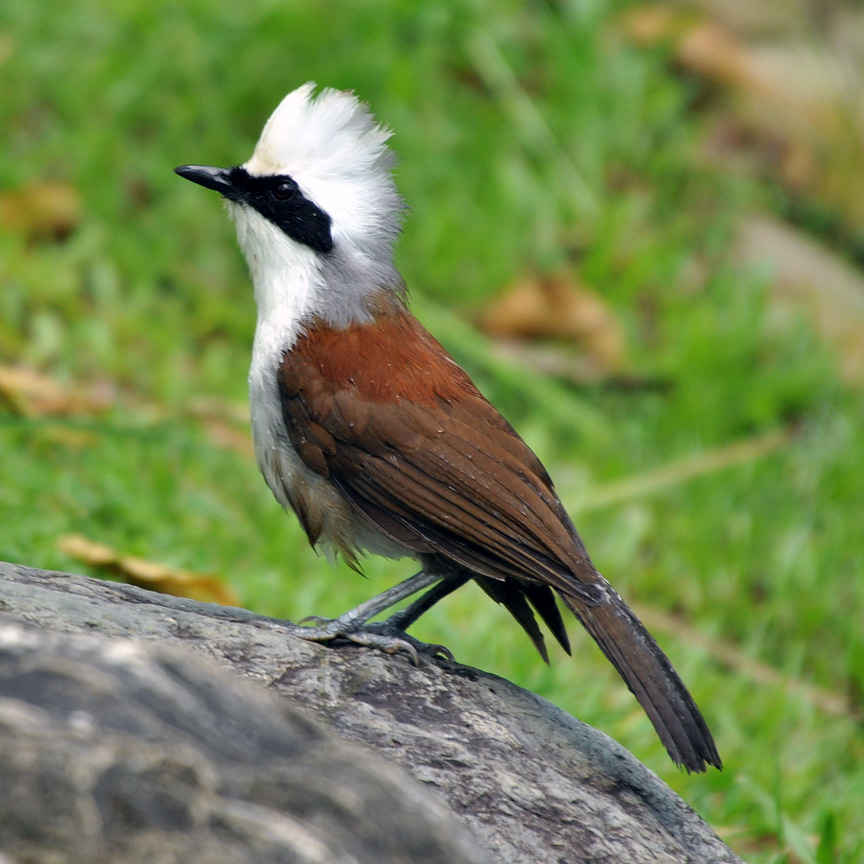
Garrulax leucolophus
SUBFAMILY
Timaliinae
TAXONOMY
Corvus leucolophus Hardwicke, 1815, Uttar Pradesh. Five subspecies.
DNA hybridization study suggests Garrulax and Liocichla
compose a separate
SUBFAMILY
(Garrulacinae) from the
other babblers, which belong in another
SUBFAMILY
, together
with some warblers (Sylviinae).
OTHER COMMON NAMES
English: White-crested jay thrush; French: Garrulaxe а huppe
blanche; German: Weisshaubenhдherling.
PHYSICAL CHARACTERISTICS
12 in (30 cm). Instantly recognizable dark-bodied, whiteheaded
bird with bushy crest and black mask and beak. Sexes
monomorphic. Subspecific variation fairly pronounced: Himalayan
nominate subspecies has brown chest and underparts.
These areas are white in southeastern Yunnan and Indo-Chinese
G. l. diardi, which also has a much grayer nape. G. l. patkaicus
of Assam, northern Myanmar, and western Yunnan, has brown
underparts, but a pure white nape. Sumatran G. l. bicolor has
underparts, back, and tail blackish brown, a very different
shade from that of other subspecies.
DISTRIBUTION
The length of the Himalayas, with some gaps, Assam, Myanmar,
southern China, Indochina, and an isolated subspecies in
Sumatra.
HABITAT
Evergreen forests, especially secondary, where heavy undergrowth
and bamboo stands abound.
BEHAVIOR
Frequents lower storeys of forest, roaming in flocks of varying
sizes (up to 40), often with other bird species. Distinctive ringing,
antiphonal vocalizations are frequent.
FEEDING ECOLOGY AND DIET
Groups continuously forage through plants and leaf litter for
insects, lizards, fruit, nectar, and seeds.
REPRODUCTIVE BIOLOGY
Species observed in flocks during the breeding season. From captive
observations, however, it may prove that only one pair actually
breeds. Clutch size is usually three to five. Eggs are white.
The wide, shallow nest is usually only about 6 ft (1.8 m) above
ground. Bamboo leaves are preferred material for nest. In China,
two broods are usually raised each year, any time from March
through August. In zoos, breedings have been recorded all year.
CONSERVATION STATUS
Not threatened. Preference for secondary forest decreases vulnerability
to habitat loss. Traditionally exploited for cage-bird
trade; as of 2002, only Indonesia exporting.
SIGNIFICANCE TO HUMANS
Very popular in zoos; more than 400 hatched in United States
alone since 1968.
Other popular Animals
Photo Gallery of - White-crested laughing thrush
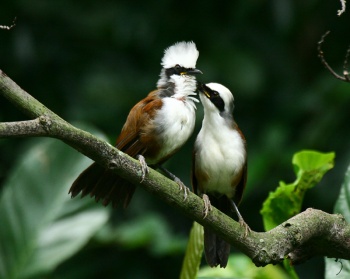
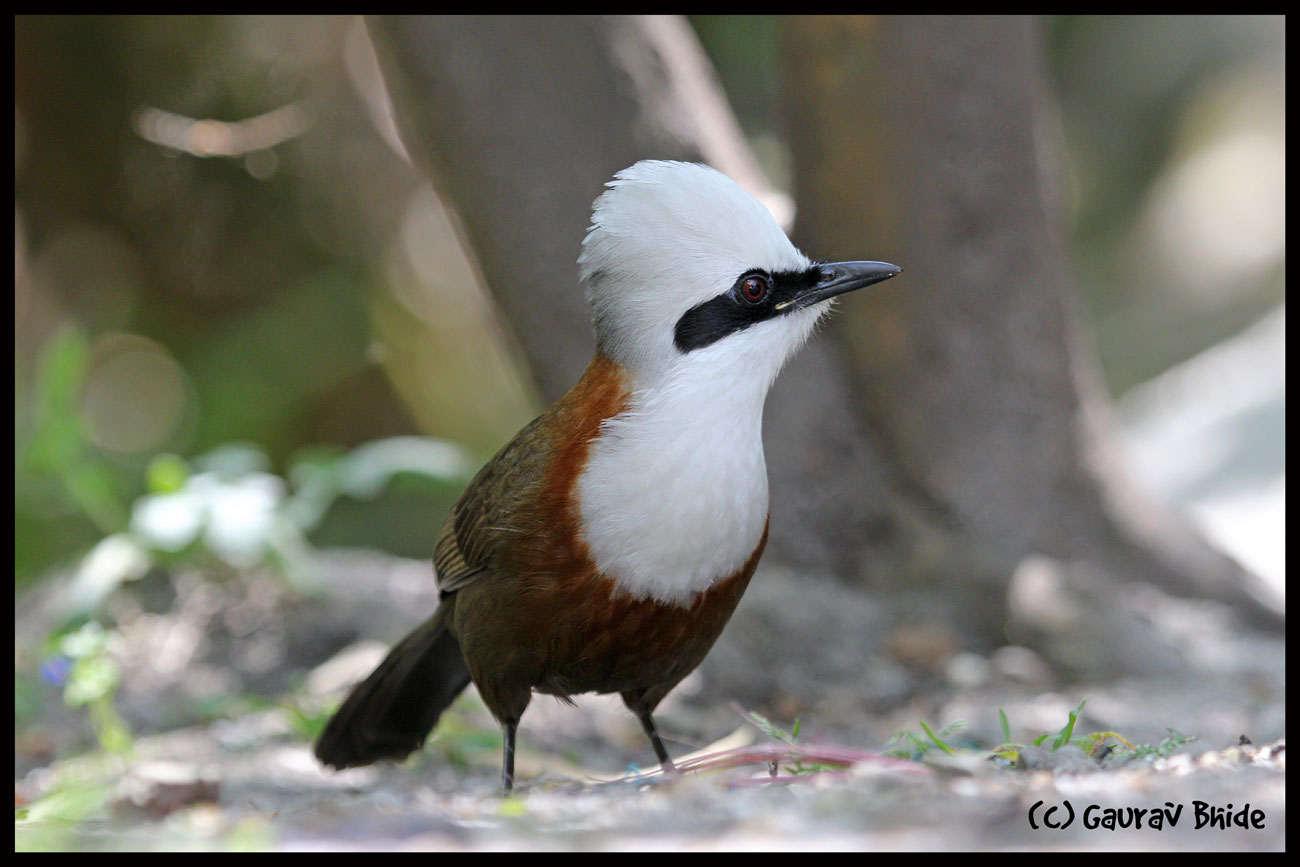
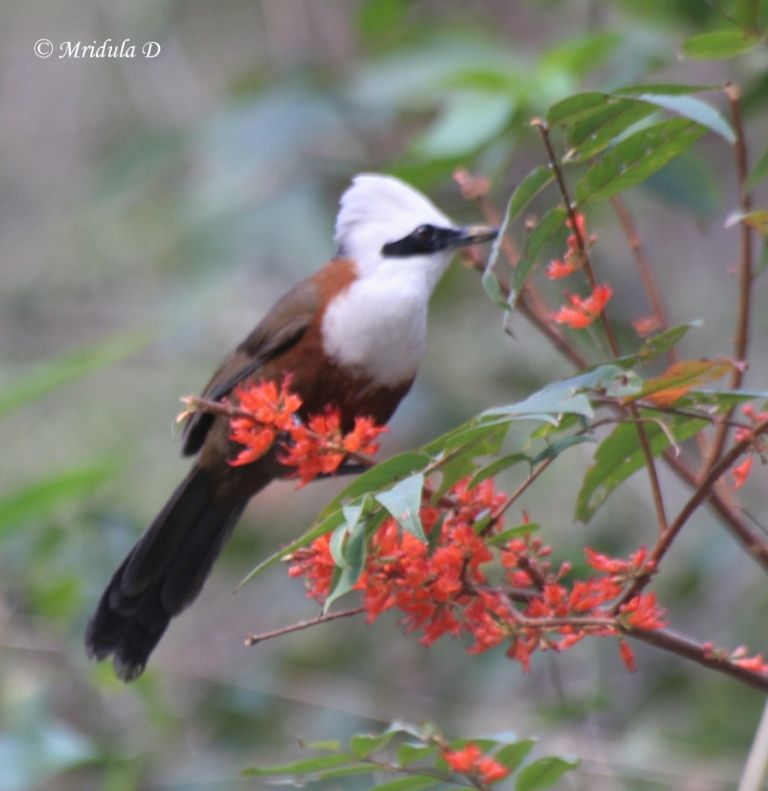
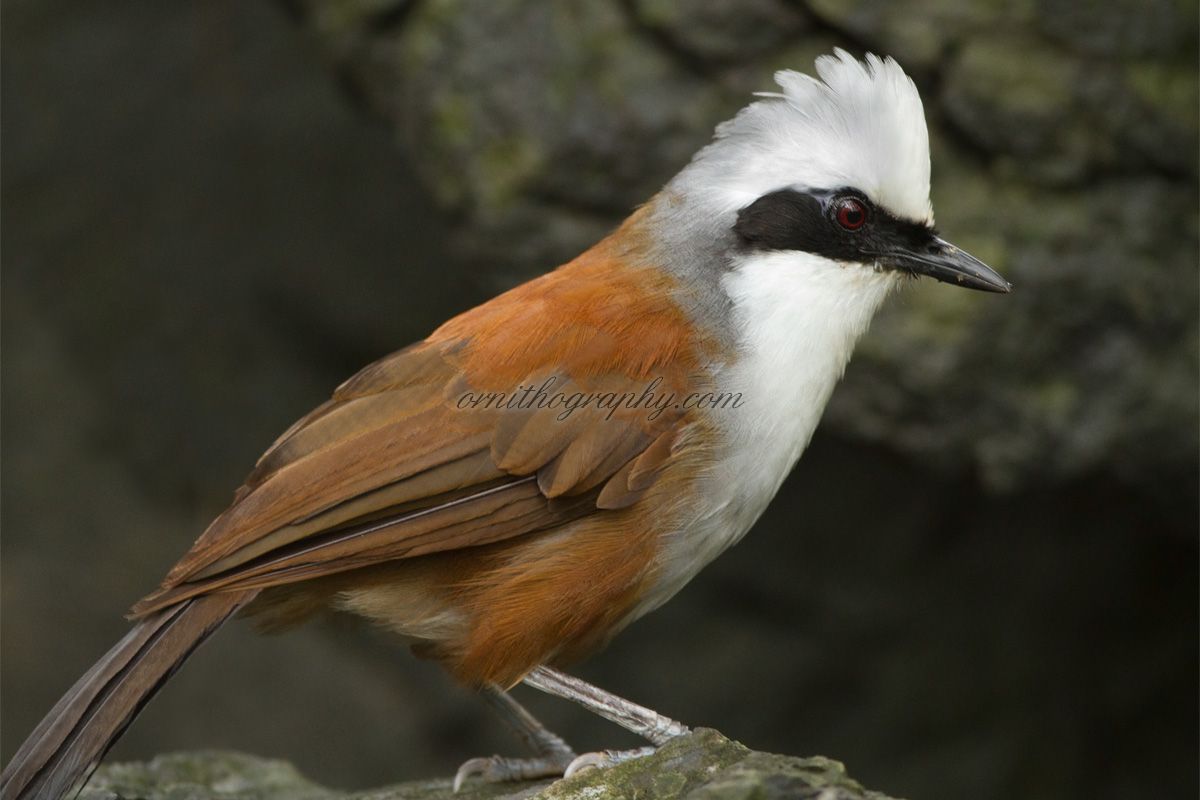
 Animalia Life
Animalia Life